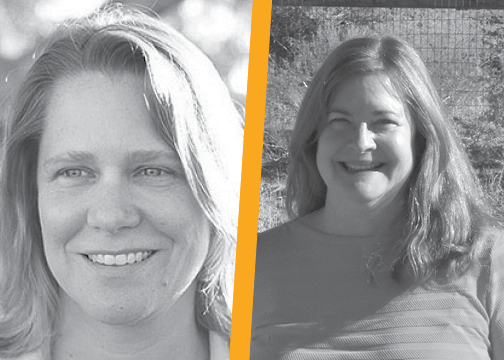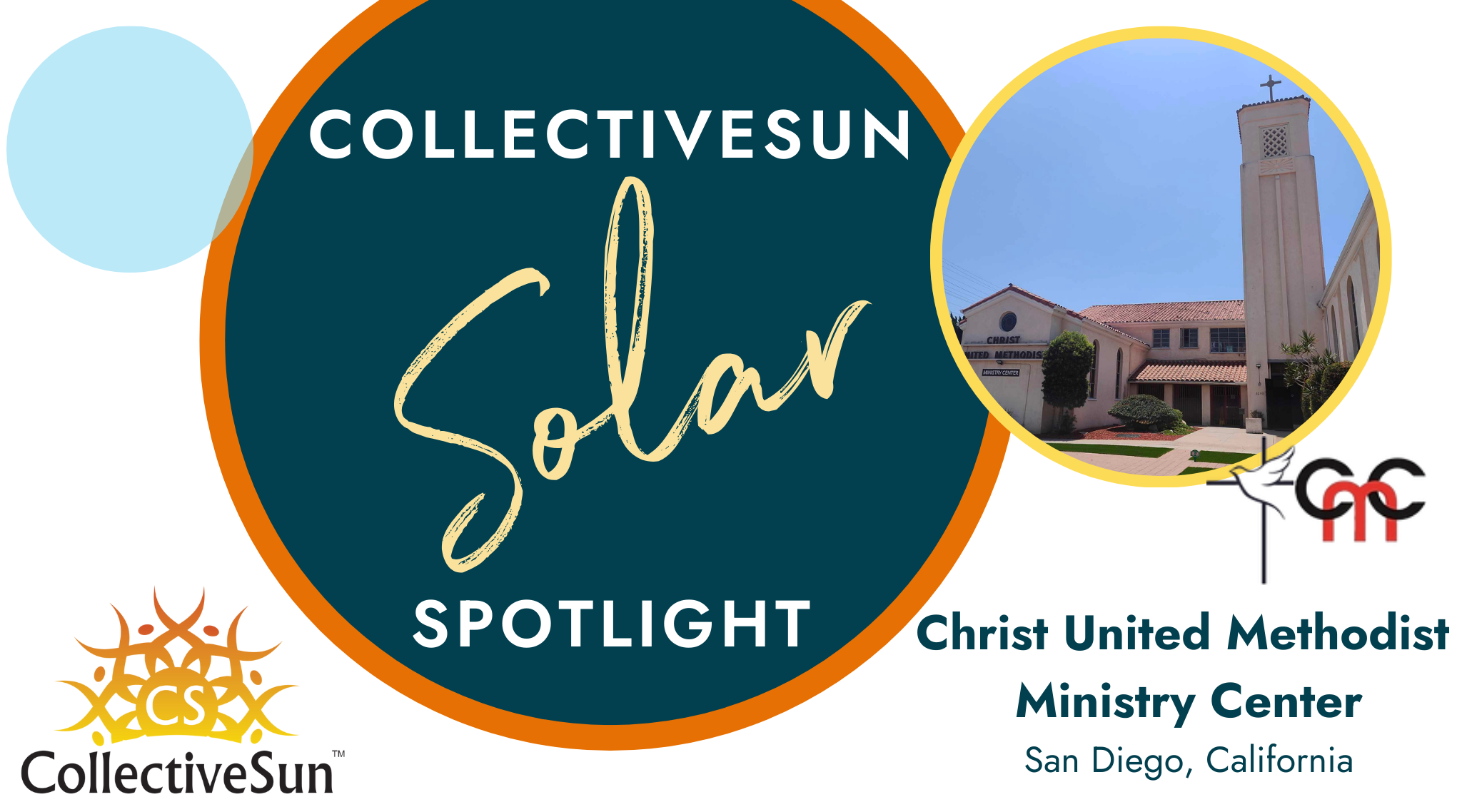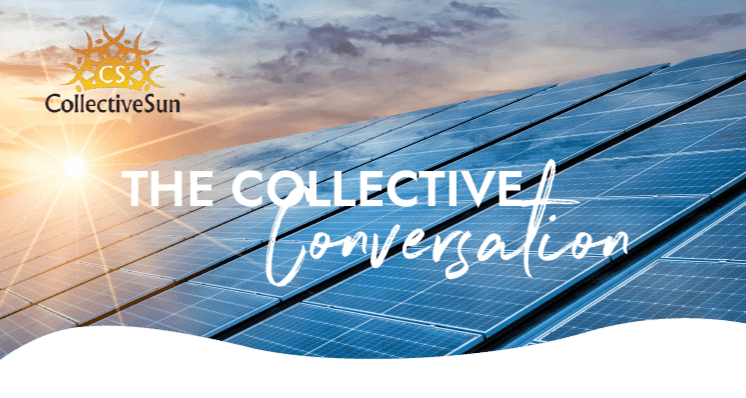
Story by Sara Carbone, CollectiveSun Content Marketing Manager
2020 was a challenging year for everyone, but it was particularly challenging for nonprofits. Many organizations were forced to shift their processes and efforts in order to best serve their communities effectively in the face of a global pandemic, an economic recession, and other changes. In order to offer our support to our nonprofit partners, CollectiveSun has created How Nonprofits are Pivoting During COVID, a series highlighting how nonprofits are adjusting to these challenges.
Our Nonprofit Pivot series has highlighted the work of many organizations including Twin Cities Public Television, Wilder Foundation, Catholic Charities Archdiocese of New Orleans, California Solar and Storage Association, and NDN Collective.
In this article, our sixth, we spoke with Allis Druffel, Director of the Southern California chapter of Interfaith Power and Light (C-IPL) and Susan Stephenson, Executive Director of the national Interfaith Power and Light organization (IPL). These organizations focus on California and the country’s religious response to global warming. Allis and Susan addressed what CIPL and IPL have done to shift their operations and advocacy in the face of changes brought by COVID.
Can you first explain how IPL and CIPL relate to one another organizationally?
Susan: Interfaith Power & Light is a national organization based in California. We started in California, so CIPL is nested within our organization. Our affiliated organizations around the country follow the same kind of mission and work. Overall we reach more than 20,000 congregations all over the country through CIPL and other affiliates, and other congregations in all 50 states that are engaged with the national program directly.
What has Interfaith Power & Light and their congregations done to stay connected with the communities they serve during COVID?
Allis: From the California IPL perspective, when COVID first hit I presumed that we would have less work to do. But I was so wrong. Pretty much everyone adapted to zoom and other online platforms, which increased our scope of efforts because we weren’t relying so much on in-person meetings and events. I’ve heard from many colleagues in other organizations that their workload remained the same, or increased, as well because of the possibility of online webinars, meetings, and discussions. We all seem to have rediscovered the telephone!
In terms of events we’ve been able to offer more. And, since they are online, they are statewide and better well-attended. In addition to our 20th anniversary celebration, we’ve had webinars focused on electric vehicles and clean transportation; the California ballot propositions, a follow up to the California legislative session; and others. We were even able to do a solar celebration in December for winter solstice. So, we were quite effective in 2020 despite COVID, and maybe partly because of it.
Pre-COVID, there was always a sense of urgency to our work. But now, there is a renewed sense of urgency. COVID is intimately connected to public health, and studies are showing that those who are disproportionately impacted by pollution sources have more severe cases of COVID. This pandemic has shown yet again the vulnerability of communities that live close to high traffic areas and stationary sources of carbon emissions, which are largely under-served communities of color. Our work needs to be on an accelerated timeline because of these injustices.
Susan: I think what Allis said also applies to national. We do a lot of different campaigns. One is our national conference when we normally all get together in person in Washington with our state leaders. We did not do that last year because of COVID, but we held it online. We had the largest participation ever because nobody had to fly or expend greenhouse gases, so that was a plus. We did our lobby or advocacy day online as well.
One thing that stands out for me is that usually for advocacy day we have representatives from all over, and we are all running around the Capitol trying to cover as many as we possibly can. We don’t actually have constituents from every district in California. But last year I remember being in a lobby meeting on the phone with the congressional representative from the Ventura area, and I was able to bring a Ventura pastor onto the call. So it was really great to be able to connect people from the districts to those meetings. We certainly couldn’t have done that otherwise.
” Some congregations are now using this as an opportunity to maintain their congregational gardens and share the food from the gardens with the community. They’re continuing services or packaging up food and using food pantries to continue to find ways to serve their communities. It is inspiring to see. “
How has Interfaith Power & Light adapted or innovated, offline and online, regarding marketing and communications?
Susan: We’re certainly doing a lot less paper with no printed marketing materials. For Faith Climate Action Week last year we had all sorts of printed packets ready to go. I think we had 40,000 postcards that had been ordered for people in congregations to pledge to vote with climate and creation in mind. And then of course with COVID hardly anybody used those because people weren’t meeting in person, so we shifted to digital pledges.
We had planned a lot of traditional in person outreach for voting for getting our message out and for candidate forums that we had to shift to online. We were able to identify voters who were likely to have climate concerns and do a new texting campaign with our partner organizations. We reached over 1 million voters to urge them to vote with climate in mind.
How have your member congregations adjusted their operations?
Susan: I know some of them have seen greater participation because their worship services are online. One in California told me they were just stunned at the number of people that were participating in their services compared to what had been before. Also, the fact that so many people have been sick and have, sadly, died has meant our congregations have had to provide pastoral care for those members. So that’s a real heavy burden, being able to take care of all of their community members while at the same time continuing to advance program work and hold services safely or online. All this has certainly impacted congregations and their revenue.
Allis: I was very impressed by our member congregations because as soon as stay at home orders were implemented, along with mask wearing and physical distancing guidelines, they all followed them. I don’t know of one member congregation that fought against them because the faith community is built upon the principle of protecting all life. So they pivoted.
I’ll never forget in early July, I received a newsletter from one of our congregations, in which the pastor stated, “I expect that this will last for another full year. So just get used to being online.” She was looking ahead when many of us were still hopeful that things would change by the end of the year! I spoke with another pastor who stated that, when in-person services were safe again, she didn’t know how she would accommodate some elderly parishioners who now felt part of the community again through online services.
Any favorite anecdotes about organizations you’ve worked with that have really stepped outside the box in how they think or approach things?
Allis: Right away in March, CIPL and all of our colleagues started asking the question: what are we learning from COVID in terms of pollution reduction? We witnessed wildlife reemerging in certain areas and carbon emissions decreasing. Susan sent us all an article stating that 2020 carbon emissions were reduced by 7.2 percent globally because much of the world was at home, not involved in high-emissions activities, like driving. So, the question is, how can we maintain some of these activities, and not go “back to normal?” This pandemic has shown that some of the “low hanging fruit” of cutting pollution is to work from home more, drive less, and walk, bike or take public transit. We have known this for a long time but some of us were actually forced into practicing it, and it hasn’t been difficult.
Susan: Some congregations are now using this as an opportunity to maintain their congregational gardens and share the food from the gardens with the community. They’re continuing services or packaging up food and using food pantries to continue to find ways to serve their communities. It is inspiring to see. Also, I know in Oakland and San Francisco the cities have taken the opportunity to shut down certain streets to car traffic to allow for more outdoor dining and recreational space – it’s called a slow street project. And you can just go around the city and see how many streets are pedestrian only now. Hopefully that will be able to continue.
Are there any industries in particular that you’ve seen that have struggled to pivot?
Susan: Sometimes our congregations that have wanted to do solar projects have been a little delayed because people aren’t going to work; they’re not able to get the financials and look at the utility bills and have somebody come in and do an audit. All of that kind of stuff has been delayed on some of the projects. I’m sure that’s affected energy auditors. We did a webinar about a new carbon calculator for congregations to use and we had great participation. But then there was a lot of confusion about how they were going to get those numbers given that the bookkeeper wasn’t going into the office and energy consumption is way down. So there’s a little bit of a wrench in the works there.
Any particularly impactful adjustments or developments around policy and advocacy?
Allis: In 2020 the California Legislature had to pivot quite quickly because COVID became the issue, the threat. All the bills that were being considered had to be COVID related and deal with COVID treatment or economic recovery. For several months, the California legislature was dark because new procedures had to be formulated and implemented for the process. There were fewer committee meetings and hearings. In all of this several very important issues that CIPL and our colleagues are working on were dropped because they were not considered COVID related. For example, there were several climate resiliency bond bills that were brought up and just dropped.
The public comment periods on the phone were sometimes difficult. CIPL and our colleagues redoubled our online efforts, like petitions, email to staff, and more personal phone calls when we could get someone on the phone to schedule an appointment.
Susan: On the federal level the big change in terms of government policy is the very different leadership we have in Washington right now. Also, The Care Act passing the last Congress was really important for many reasons. But we’ve played a role to make sure that we were advocating for those who need help the most with utility shutoff moratoriums and rental assistance. We were able to push for the continuation of the renewable energy tax credit. So, there were ways to attach climate or equity related legislation to bills in Congress that were “must pass.” So I see a shift in strategy around that.
I think that will certainly continue with Biden’s approach to building back better. We have an opportunity to really fast track our transition to a clean energy economy. We’re already seeing that with the executive orders that have come out. We’re hoping for a lot more in terms of funding for transit, green jobs training, energy efficiency programs, electric vehicles. All of these things are really important for building back our economy and helping people to get good jobs.
Allis: The fact that climate bills will now be taken up in the Senate is very, very hopeful. There is the recognition in the Biden-Harris administration, and by many legislators, that the issues of the transition to a clean energy economy, public health, racial justice, job creation and access to jobs are all interrelated. The more that our policies address all those at once, the better it will be for all residents of the U.S.
About Susan Stephenson
Susan oversees The Regeneration Project and its Interfaith Power & Light campaign. Susan has 20 years of experience developing and implementing issue-advocacy and electoral campaigns for environmental and other public interest organizations. Prior to joining The Regeneration Project, she served as vice president of the Oakland-based campaign consulting firm The Next Generation. Beginning in 1999, she organized and coordinated the California Global Warming Campaign, which implemented a proactive strategy resulting in several landmark legislative victories. She has been involved with California Interfaith Power & Light since its inception in 2000.
Susan received a B.A. in English Literature from the University of North Carolina. When not at work she can be spotted hiking in the East Bay hills or attending a local music festival.
About Allis Druffel
Allis has been active in climate change issues for almost two decades, and joined California Interfaith Power & Light in 2009, where she is now Southern California Director. She previously served as Director of Community Services for Holy Family Church in South Pasadena and is former chair of the Los Angeles Catholic Archdiocese Office of Justice and Peace.
Allis is a classical singer and holds a Master degree in Vocal Performance from the University of Maryland, as well as a Master degree in Pastoral Ministries from Santa Clara University. In addition to climate change work, she continues to sing, often combining nature themes, environmental education, and current events in her recordings and recitals.






